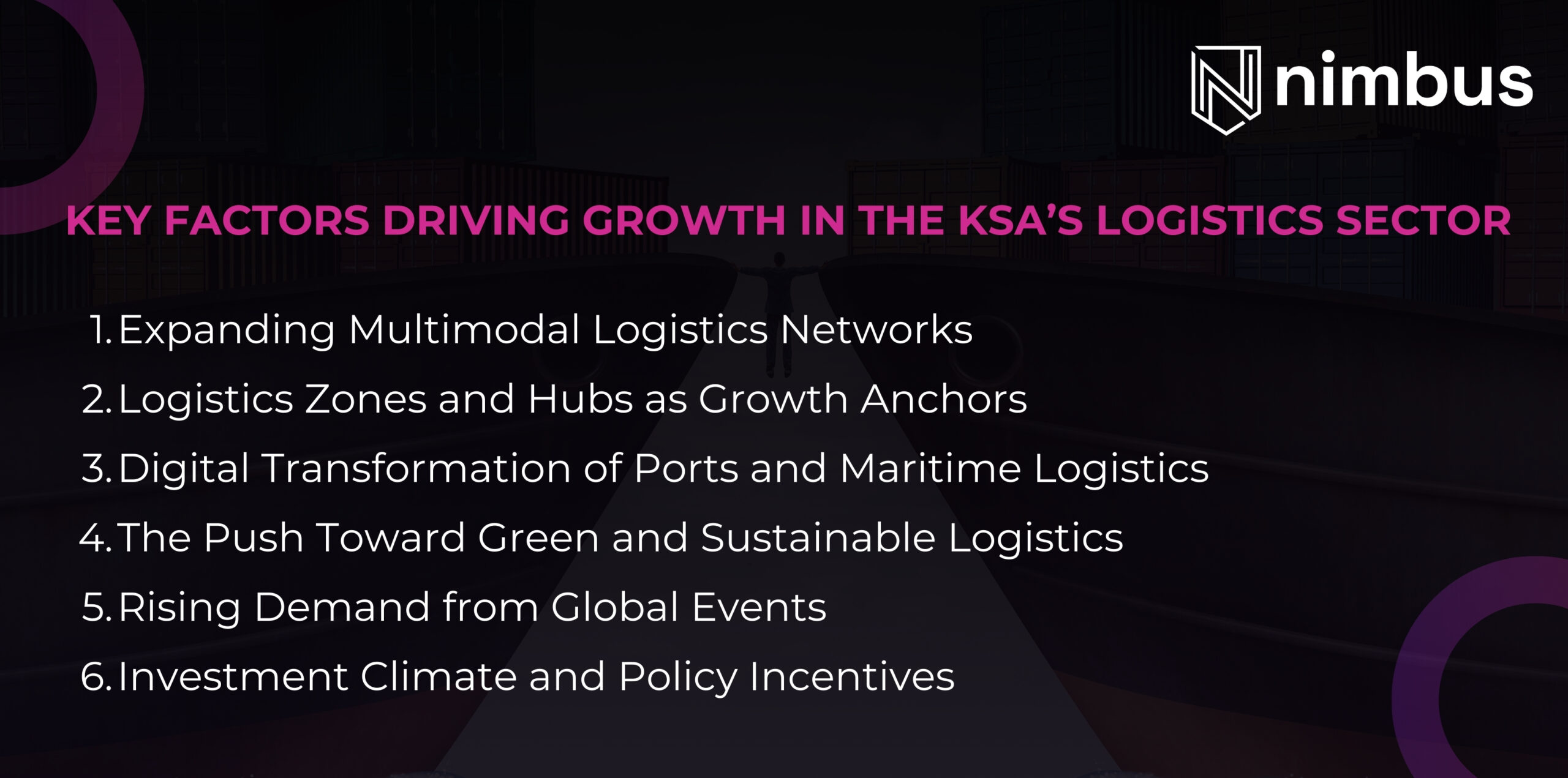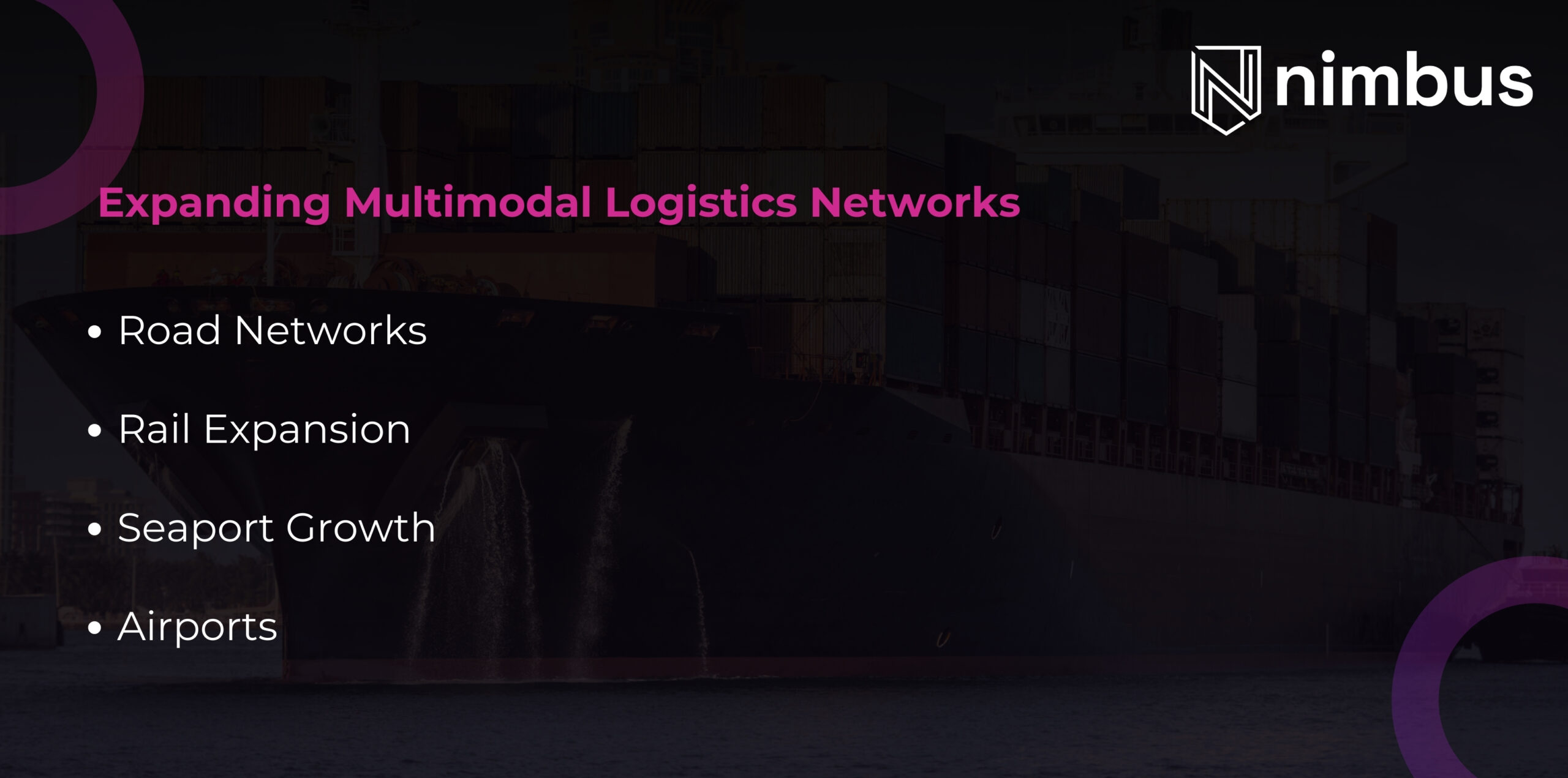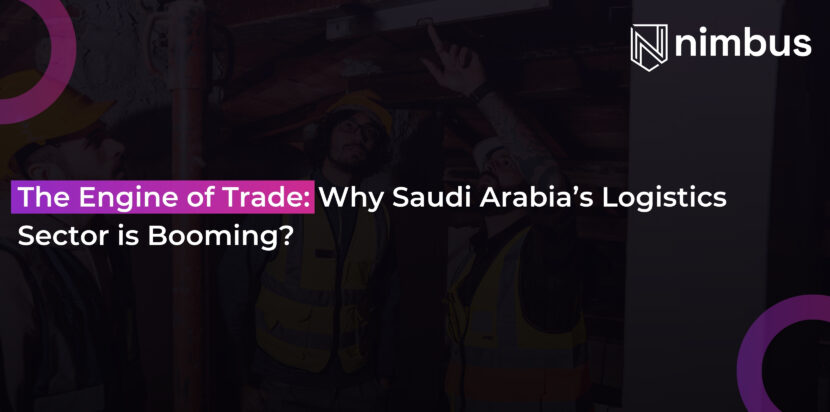Saudi Arabia’s logistics sector is undergoing a rapid transformation that reflects the Kingdom’s broader ambitions under Vision 2030. Valued at $136.3 billion in 2024, the market is projected to reach $198.9 billion by 2030.
This growth is driven not only by increasing business setup in Saudi Arabia and the rise in manufacturing output and expanding economy, but also by its preparations for hosting global events like Expo 2030 and the 2034 FIFA World Cup.
With $1.1 trillion in planned investments across infrastructure and logistics, the KSA is creating a modern supply chain ecosystem that rivals leading global markets.
For businesses and investors, these developments signal immense opportunities in logistics, warehousing, e-commerce, and company formation in the KSA. This post lists the driving forces shaping Saudi Arabia’s logistics sector. Let’s take a look.
KEY FACTORS DRIVING GROWTH IN THE KSA’S LOGISTICS SECTOR

1. Expanding Multimodal Logistics Networks
Saudi Arabia has committed to investing $267 billion in infrastructure development over the next decade. The government’s approach emphasizes seamless integration across four critical transport modes, roads, railways, seaports, and airports.

– Road Networks: A SAR 3 billion ($799 million) investment is being made to expand and maintain Riyadh’s road systems, covering over 15,000 kilometers. Improved road connectivity directly supports faster domestic trade and last-mile logistics.
– Rail Expansion: Plans are underway to increase Saudi Arabia’s rail network by 50% by 2030, creating new corridors for freight and passenger transport. This will reduce pressure on roads and enhance regional integration.
– Seaport Growth: With Saudi ports handling 320.78 million tons of cargo in 2024, a 14.45% year-on-year increase, seaports are critical to international trade. Expansions aim to position Saudi Arabia as a global maritime logistics hub, which will help push Saudi business setup in the trade sector.
– Airports: By 2030, Saudi Arabia plans to triple passenger traffic to 330 million annually and raise freight capacity to 4.5 million tons. Airport upgrades and new facilities are being designed to support this surge.
2. Logistics Zones and Hubs as Growth Anchors
Complementing transport investments is the creation of logistics hubs and zones strategically located across the Kingdom. These serve as central nodes for distribution, cargo handling, and warehousing.
Saudi Arabia aims to expand its logistics zones from 22 to 59 by 2030, with 18 new hubs already announced. Investments in these facilities exceed SAR 10 billion ($2.66 billion).
The demand is being fueled by the e-commerce boom. Warehousing requirements have grown by 267% since 2021, reflecting the surge in online retail. At the same time, re-export activities have strengthened, driving demand for integrated logistics centers.
The rise of e-export logistics centers, from just two in 2019 to 23 operational facilities by 2025, illustrates the pace of transformation. These hubs improve intercity trade and position Saudi Arabia as a vital re-export platform for the Middle East and beyond.
3. Digital Transformation of Ports and Maritime Logistics
Seaports remain the dominant channel for Saudi trade, with Jeddah Islamic Port alone handling 60% of the Kingdom’s imports by sea. Recognizing this, the Saudi Ports Authority (Mawani) has rolled out the “Smart Ports” initiative to integrate advanced technology into port operations. Digital transformation efforts include:
- Remote-controlled Ship-to-Shore (STS) cranes and Autonomous Guided Vehicles (AGVs).
- Partnerships with global technology leaders like Huawei and STC to introduce 5G-based solutions for cybersecurity and infrastructure.
- Investments in cloud computing for real-time monitoring and logistics optimization.
NEOM Port exemplifies this shift. In May 2025, it received Saudi Arabia’s first automated cranes, significantly streamlining container handling. By accelerating port digitalization, Saudi Arabia is improving throughput, reducing congestion, and enhancing competitiveness in global trade.
4. The Push Toward Green and Sustainable Logistics
Saudi Arabia has committed to achieving net-zero emissions by 2060, making sustainability a central priority in its logistics strategy. This aligns with the Saudi Green Initiative (SGI), which emphasizes energy transition, clean mobility, and reduced carbon emissions.
Logistics contributes significantly to emissions, but recent measures are helping lower the sector’s carbon footprint:
- Multimodal integration reduces reliance on road transport, cutting down on fuel use.
- Digitization at ports allows for more efficient scheduling, minimizing idle times and unnecessary trips.
- Circular logistics models and innovations in last-mile delivery are being piloted to optimize urban transport.
5. Rising Demand from Global Events
Saudi Arabia’s hosting of Expo 2030 and the FIFA World Cup 2034 will place unprecedented demands on its logistics capabilities. These events require massive investments in supply chains for construction, hospitality, retail, and technology. This presents numerous opportunities for business setup in Saudi Arabia for companies specializing in:
- Event logistics and infrastructure delivery.
- Warehousing and cold storage solutions for food and beverages.
- High-capacity transport and supply chain coordination.
Investors who align early with these requirements can secure contracts that can embed long-term value in the Saudi logistics ecosystem.
6. Investment Climate and Policy Incentives
Reforms under Vision 2030 have created an investment-friendly environment for logistics players. The government is offering incentives such as tax breaks, simplified licensing, and opportunities for foreign ownership in logistics projects.
Private capital is actively being invited to co-develop infrastructure, warehousing, and digital platforms. The entry of international expertise is seen as essential for building a globally competitive logistics sector.
The Ministry of Transport and Logistics Services has outlined a strategy to position Saudi Arabia among the world’s top 10 logistics markets by 2030, signaling strong government backing for the industry’s expansion.
A Logistics Market Ready for Global Leadership

Saudi Arabia’s logistics sector is evolving into one of the most dynamic in the world. With nearly $200 billion in projected market value by 2030, its growth is underpinned by massive infrastructure spending, digital transformation, sustainability goals, and rising demand from mega-events.
For investors and businesses, it’s an appropriate time to work around business setup in Saudi Arabia, whether in multimodal transport, warehousing, digital platforms, or green logistics solutions, and be a part of a world-class ecosystem that connects the MENA regions through modern trade routes.


